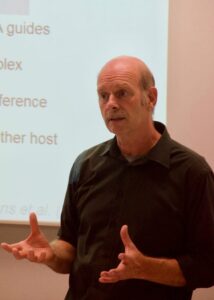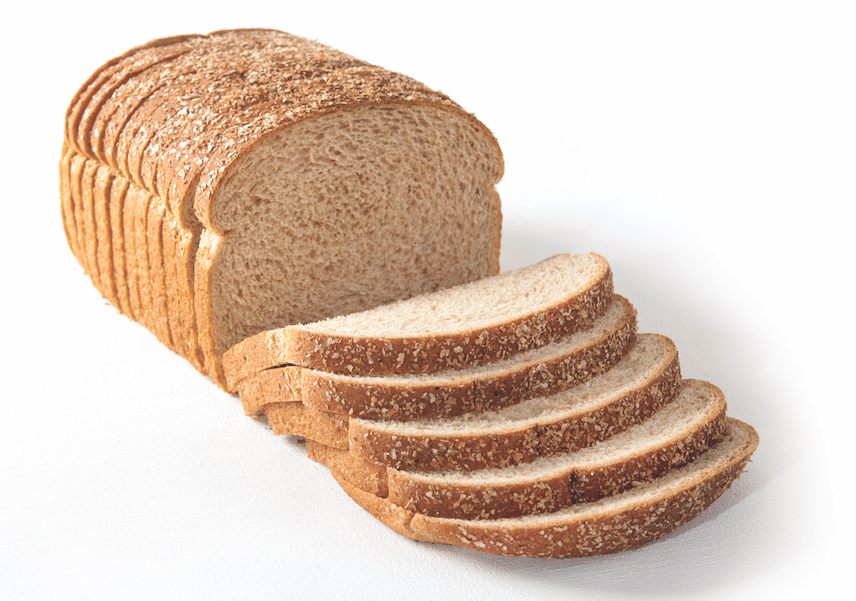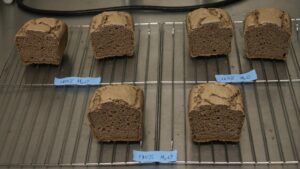Researchers are using gene editing with the hopes of modifying the protein of wheat to help those with celiac disease.

The rise of people dealing with celiac disease leads to the question, “why is there an increase?” Brett Carver, an Oklahoma State University wheat researcher, says people don’t get celiac disease because of an increase in gluten consumption, but rather are born with the celiac disease gene that makes them intolerant to gluten.
“The kinds of protein and gluten present in today’s wheat varieties mirrors the composition present throughout the domestication of wheat,” Carver says.
Protein content in modern wheat varieties is very similar to that of older varieties, according to Carver, which means the intolerance has been around for many years.
According to the Celiac Disease Foundation, celiac disease is four to five times more common than 50 years ago. Today, it is estimated to affect one in 100 people worldwide. The only known treatment for celiac disease is a gluten-free diet, meaning no foods that contain wheat, rye or barley; but current research could find a way for these people to enjoy foods containing gluten.
Since genetic modifications are not used in wheat breeding, other technologies are being used to discover what part of the wheat grain is actually affecting those with gluten intolerance.

Aaron Harries, vice president of research and operations with Kansas Wheat says checkoff-funded research to help discover celiac-safe wheat has been ongoing since 2015, but recently has taken a detour with the new technologies available.
“We did find out some good information during the early part of the research looking at the different wheat lines to see the differences in the gluten protein in each,” Harries says. “But with the new gene editing technology, the research has taken that path.”
John van der Oost, a microbiologist at Wageningen University in the Netherlands, has been studying gene editing since 2002.
“Wageningen University research has shown the genes of viruses can have fragments edited to help with immunity against the viruses,” van der Oost says. “This research can also help us carry out specific editing of genomes to change part of the DNA to prevent diseases, viruses and mutations.”
Van der Oost says the easy part is finding the gene causing the problem, but then the difficult part is repairing the system and getting the DNA back together and activating the gene again.
Gene editing works by first identifying a targeted DNA strand for a specific trait or disease. A specifically-designed synthetic guide molecule finds the target DNA strand, then an enzyme cuts off the target DNA strand and replaces it with a healthy one.
“Editing genes is a cheaper, faster and more accurate way to repair a problem,” van der Oost says. “This speeds up the evolution of a gene, but we still need to be accurate. The process has been successful in bacteria, fungi, algae and plants. We continue to do research in hopes of finding a cure for some human genetic diseases.”
Harries says even with the recent ruling by the Court of Justice of European Union to treat gene-edited organisms the same as genetic modified organisms, the research continues in the U.S. and worldwide.
“Gene editing research is a great platform for us to find how the protein can be edited to eliminate the part affecting those with Celiac disease,” Harries says. “The key is going to be how the wheat does in making bread once it is changed.”

This long-term research could see more changes in the future. Harries says finding the best, safest and fastest results is what they are looking for, but they also want to be sure the technology is done accurately.
“We have to make sure we are satisfying the millers and bakers, as well as the wheat farmers,” says Carver. “We have to concentrate on quality yield and values for all aspects of the industry.”
Harries says those at Kansas Wheat are excited about the direction this research is going and hope to find the results to help all consumers.
Kansas wheat farmers are supporting this research through checkoff dollars with researchers at Kansas State University and the results could be life-changing for the millions of people who suffer from celiac disease.












